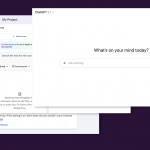
In the digital age, data is the lifeblood of businesses. From intellectual property (IP) and sensitive information to customer data, the information companies possess is both their strength and vulnerability. With the surge in cyberattacks, phishing incidents, and insider threats, protecting this data has never been more important. Data Loss Prevention (DLP) is an indispensable tool in the cybersecurity arsenal. This article delves deep into DLP, demystifying its essence, and illustrating why, in an era rampant with data breaches and data exfiltration, DLP is not just an option, but a necessity. Whether you’re a CISO, CIO, or IT manager charged with data protection, this comprehensive guide offers insights, examples, and best practices to fortify your data defense mechanisms.
What DLP Means
Data Loss Prevention can be compared to a vigilant guardian overseeing the vast expanse of an organization’s data landscape. But what does it really signify?
At its core, DLP is a strategy and a set of tools aimed at ensuring that sensitive data – whether it’s IP, customer data, or internal communications – does not leave the organization without proper authorization. This can include preventing data leaks, unauthorized data transfers, or malicious insider threats.
In broader terms, DLP solutions identify, monitor, and protect data in transit, data at rest, and data in use. This is accomplished through:
- Identifying sensitive information: This involves data classification, where data is tagged based on its sensitivity, such as confidential, public, or restricted.
- Monitoring data: DLP tools keep an eye on where data is going, who is accessing it, and how it’s being used. If a salesperson, for instance, tries to download the entire client database onto a USB, a DLP tool would flag this action.
- Protecting data: If a potential threat or unauthorized action is detected, DLP solutions can block the activity, alert security teams, or even encrypt the data in real-time.
With the rise of cloud computing, remote work, and an expanding digital workspace, the role of DLP has evolved to protect data across diverse platforms, from on-premises servers to cloud applications. So, whether it’s a document stored in a cloud storage solution or a message sent over an instant messaging platform, DLP ensures sensitive data remains within the safety boundaries defined by an organization.
Understanding the Necessity: Why is DLP Needed?
With the sheer volume of digital data growing, it’s easy to think of it merely as ones and zeros. But data, especially sensitive data, holds immense value, both tangible and intangible. Here’s why DLP is not just important, but essential:
- Protection Against Data Breaches and Leaks: News of major corporations suffering data breaches has become alarmingly common. Whether it’s due to malicious cyberattacks, insider threats, or simple human error, data breaches can result in massive financial losses and harm to an organization’s reputation. DLP security serves as the frontline defense against such incidents.
- Regulatory Compliance: Laws like the GDPR, HIPAA, and many others mandate strict data protection standards. Non-compliance can lead to hefty fines and legal repercussions. DLP solutions ensure that organizations adhere to these regulations by preventing unauthorized data access and transfers.
- Intellectual Property Safeguard: Imagine if a company’s product blueprints or a publisher’s upcoming book manuscript got into the wrong hands. IP is often the backbone of an organization, and DLP ensures that such critical data is only accessed by authorized personnel.
- Adapting to Modern Work Environments: The rise of remote work and Bring Your Own Device (BYOD) policies can introduce vulnerabilities. “““`Employees accessing company data from unsecured networks or personal devices can pose a risk. DLP solutions adapt to these modern work trends, offering protection regardless of where and how data is accessed.
- Financial Repercussions: A data breach can lead to direct financial losses – from paying ransoms in the case of ransomware attacks to compensating affected parties. Moreover, the subsequent drop in stock prices, loss of customer trust, and potential lawsuits can have long-term financial implications. DLP serves as a preventive measure, potentially saving organizations from these exorbitant costs.
In essence, DLP goes beyond mere data protection. It’s about safeguarding an organization’s reputation, ensuring trust with stakeholders, avoiding legal pitfalls, and ultimately, guaranteeing that the lifeblood of modern businesses remains protected against a myriad of threats.
Types of DLP: An Overview
In the ever-evolving cybersecurity landscape, understanding the different facets of DLP is crucial. DLP solutions can be categorized based on where and how they offer protection:
- Network DLP: As the name suggests, these solutions monitor and control data as it moves in and out of the company’s networks. This includes emails, instant messaging platforms, web traffic, and more. By setting predefined policies, network DLP tools can block, quarantine, or encrypt sensitive data being transmitted outside the organization.
- Storage or Data-at-Rest DLP: This type of DLP focuses on data stored in databases, file servers, cloud storage, laptops, and other devices. It identifies where sensitive data resides and ensures it’s accessed only by authorized individuals. For instance, if a user without proper permissions tries to access a confidential file on a server, the DLP solution would prevent it.
- Endpoint DLP: This targets data in use on end-user devices—laptops, workstations, mobile phones, tablets, and more. By monitoring actions users perform on data, endpoint DLP can prevent unauthorized data transfers, block copying to external storage devices, and even provide shadow copies of data being transferred for audits.
To understand better, let’s consider a real-world example:
A financial analyst in a multinational bank is working on a sensitive report detailing future investments, stored on a cloud server (protected by Data-at-Rest DLP). The analyst accesses the report from their laptop at home (Endpoint DLP ensures the data is safe in use). Now, they try to send the report to a friend via email (Network DLP scans the email content, identifies the sensitive information, and either blocks the email or encrypts the report).
This multi-layered approach of different DLP types works together to ensure that data is protected at all stages, providing a holistic security umbrella against potential breaches and unauthorized access.
Best Practices in Implementing DLP
Ensuring effective DLP is not just about selecting the right DLP solution but also about its strategic implementation. Here are some best practices organizations should consider:
- Start with a Risk Assessment: Before diving into a DLP deployment, conduct a thorough risk assessment. Identify what sensitive data you have, where it resides, and who has access to it. This gives clarity on what needs to be protected and where to focus DLP efforts.
- Classify Your Data: Not all data is created equal. Some data is public, some is confidential, and some is sensitive. Use data classification tools or methodologies to categorize data based on its sensitivity. This ensures that stricter policies are applied to more sensitive data.
- Develop Clear DLP Policies: Create comprehensive, understandable, and actionable DLP policies. These should define what constitutes a breach, potential threats, and appropriate responses. Policies should be regularly updated to stay current with emerging threats and business changes.
- Educate and Train Employees: A significant portion of data breaches can be attributed to human error. Conduct regular training sessions to ensure employees understand the importance of data security, how to recognize potential threats, and what actions to take in case of suspicious activities.
- Monitor and Review: A successful DLP strategy is one that’s dynamic. Continuously monitor the effectiveness of DLP tools, review incident reports, and adjust policies as necessary. Regular audits can also help in identifying potential vulnerabilities and areas of improvement.
- Ensure Seamless Integration with Other Security Solutions: DLP should not exist in a vacuum. Ensure it integrates well with other security solutions like Intrusion Detection Systems (IDS), firewalls, and encryption tools for a multi-layered defense strategy.
- Stay Updated with Compliance Requirements: As mentioned earlier, regulatory bodies like GDPR and HIPAA have strict data protection requirements. Keep abreast of these changes and ensure that your DLP strategy aligns with compliance standards to avoid legal ramifications.
- Use Advanced Technologies: With advancements like machine learning and automation, modern DLP solutions can adapt and respond to threats in real-time. Leveraging these technologies can add another layer of robustness to your DLP strategy.
Remember, the ultimate goal of DLP is to safeguard sensitive data. However, how you implement and manage DLP solutions can significantly impact their effectiveness. By adhering to best practices and constantly refining the approach, organizations can build a resilient defense against data breaches and unauthorized access.
The Future of DLP: Evolving Threats and Solutions
As we advance into an era dominated by digital transformations, the dynamics of data security and the threats we face are constantly evolving. The future of DLP is not just about adapting to these changes but anticipating them. Here’s a glimpse into the future landscape:
- Rise of AI and Machine Learning: Advanced algorithms powered by Artificial Intelligence (AI) and Machine Learning will play an integral role in DLP solutions. They can help in real-time detection of unusual patterns, predicting potential threats, and auto-remediation of vulnerabilities.
- Increasing Insider Threats: As remote work becomes more prevalent, the boundaries of traditional office spaces blur. This could lead to an increase in insider threats, both intentional (malicious insiders) and unintentional (employee negligence). DLP solutions will need to be more vigilant and adaptable in such a decentralized work environment.
- Enhanced Cloud Security: With businesses increasingly shifting to cloud platforms, cloud security, especially Cloud DLP, will be a focal point. Protecting data across multi-cloud environments, ensuring consistent policies, and dealing with data sprawl will be critical challenges to address.
- IoT and Edge Computing: As the Internet of Things (IoT) expands, billions of devices will be connected to the internet. These devices, often operating on the edge of networks, can become potential vulnerabilities. DLP solutions will need to expand their purview to include these devices and the data they process.
- Quantum Computing: This emerging technology promises computational speeds unimaginable with today’s computers. But they also pose a threat, potentially breaking encryption methods we currently consider secure. Future DLP solutions may need to incorporate quantum-resistant encryption techniques.
- Regulations and Compliance: As the importance of data privacy becomes universally recognized, more countries and regions will introduce stricter data protection regulations. DLP strategies will have to be agile, adjusting to these evolving compliance landscapes.
- Unified Data Protection Platforms: Instead of having isolated tools for different security aspects, the future might see unified platforms combining DLP, endpoint protection, threat intelligence, and more. Such platforms can offer holistic security, streamlined management, and better adaptability.
To stay ahead in this game, businesses and DLP providers must keep their fingers on the pulse of technological advancements, be prepared to tackle emerging threats, and always place data protection at the forefront of their strategies.
Why DLP Matters Now More Than Ever
In our hyper-connected world, data has become the lifeblood of organizations, driving business decisions, fueling innovation, and offering competitive edges. However, with this reliance on data comes the heightened risk of data breaches, leaks, and unauthorized access. This is where DLP steps in as an indispensable tool in the arsenal of modern businesses.
The significance of DLP cannot be understated:
- Reputation Preservation: A single data breach can tarnish an organization’s reputation, built over years or even decades. DLP ensures that sensitive data, be it IP or personally identifiable information (PII), remains shielded from both external cyberattacks and internal threats.
- Financial Implications: Beyond the immediate costs of a breach, like ransom payments or system restoration, there’s the potential for regulatory fines, lawsuits, and loss of business. Investing in robust DLP solutions can prevent such financial pitfalls.
- Regulatory Compliance: With stringent regulations like GDPR, HIPAA, and PCI-DSS in place, ensuring data protection isn’t just a best practice – it’s a mandate. DLP assists organizations in maintaining compliance, avoiding hefty penalties, and showcasing their commitment to data privacy.
Evolving Threat Landscape: Cyber threats are not static. As technology evolves, so do the tactics of cybercriminals. Organizations must proactively adapt and bolster their defenses, with DLP being a key component in this adaptive strategy.
While the digital age presents a myriad of opportunities, it also brings forth challenges. As data continues to be a prime target, ensuring its protection is not a luxury but a necessity. DLP offers a robust, flexible, and comprehensive solution, safeguarding sensitive data and allowing businesses to confidently operate in an unpredictable landscape.
Download our free ebook on
Data Loss Prevention Best Practices
Helping IT Managers, IT Administrators and data security staff understand the concept and purpose of DLP and how to easily implement it.
















